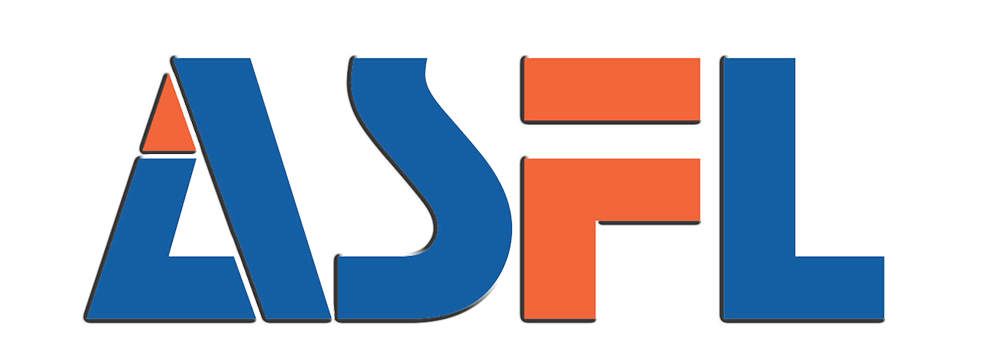Core Components of a 5-Gallon Water Bottle Filling Machine
Integrated Bottle Washing, Filling, and Capping System for End-to-End Automation
Water bottle filling machines these days make production much smoother because they bring together washing, filling, and capping all in one go. When everything happens automatically like this, there's less chance of getting contaminants in the bottles and people don't have to handle them as much, which means cleaner products and faster work overall. During the wash cycle, powerful jets blast away any leftover bits from previous batches. The filling stage relies on special sensors that measure exactly how much liquid goes into each container. For sealing, machines use controlled torque settings so caps stay put without being over tightened. These fully automatic setups can crank out anywhere between 300 to 600 bottles every hour, cutting down wait times and keeping things moving when companies need to produce large quantities.
Volumetric vs. Gravimetric Filling Methods: Precision, Accuracy, and Waste Control
Volumetric filling works by using set volume measurements and tends to work best with thin liquids such as water, giving around plus or minus 1% accuracy. On the flip side, gravimetric systems actually weigh the liquid instead, which means better precision at about half a percent error margin. These systems also handle issues like temperature fluctuations and foam much better too according to research from Ponemon back in 2023. Sure, gravimetric equipment costs about 15 to 20 percent more upfront money wise, but look at what it saves over time. Big operations report cutting down wasted products by roughly 12 to 18% each year. That makes these machines worth considering especially when dealing with high value drinks or anything where getting consistent results matters most.
Types of Capping Systems: Screw Caps, Snap Caps, and Sealing Mechanisms
- Screw caps: Utilize rotary cappers with adjustable torque (5–20 Nm) to prevent under- or over-tightening.
- Snap caps: Employ vertical pressure systems (up to 150 PSI) to achieve tamper-evident closure.
-
Heat induction seals: Apply 160–200°C heating elements to bond foil liners airtightly.
Each system incorporates optical sensors that verify cap placement and seal integrity before bottles proceed to packaging, ensuring consistent quality and compliance with safety standards.
Hygiene and Aseptic Standards in Multi-Stage Processing
Modern filling equipment built for FDA and HACCP compliance typically incorporates stainless steel 316L components because this grade resists corrosion better than standard stainless. Many systems also feature Clean-in-Place spray nozzles along with three distinct rinse stages during processing. The bottle washing process includes multiple UV-C sterilization steps too. A recent industry report from 2023 found these UV treatments cut down on bacteria presence by almost 99.8 percent in most cases. All these design elements work together to keep microbes at bay, which is critical for maintaining clean conditions when producing food products. Manufacturers know that even small improvements in sanitation can make a big difference in preventing contamination incidents throughout the supply chain.
Filling Accuracy and Precision Nozzles for Consistent Output
How Precision Filling Mechanisms Ensure Consistent Volume and Reduce Errors
Modern 5 gallon filling machines now rely on servo driven pumps and flow meters to hit around half a percent accuracy in volume measurements, which meets those important FDA and ISO requirements. What makes these systems really stand out is their ability to automatically compensate when things change like temperature fluctuations or differences in product thickness, so operators don't have to constantly tweak settings manually. Take a look at the numbers from Packaging Tech Review last year: machines using those special 316L stainless steel nozzles cut down on spills by nearly four fifths compared to old school gravity fillers. Less mess means cleaner production lines and better material usage overall for manufacturers who care about waste reduction.
Minimizing Product Loss with High-Precision Nozzles and Closed-Loop Controls
When closed loop control systems work together with laminar flow nozzles, they tend to reduce product waste somewhere around 15% during those fast paced production runs. The real time pressure checks help deal with pesky foam issues or annoying air bubbles that might otherwise mess things up. Plus there's this auto drip prevention feature that stops leaks once containers are filled. Some top end machines come equipped with adjustable nozzles ranging from 2 to 20 mm. These adapt well to slight differences in bottle neck sizes, usually handling variations as small as half a millimeter. That means manufacturers get consistent results even when switching between various container styles on the same production line.
Case Study: Reducing Overfilling by 40% Using Servo-Controlled Valves
In 2022, when a bottling plant processing around 600 bottles each hour swapped out their old pneumatic valves for new servo-controlled models, they saw something interesting happen. The overfill rate dropped dramatically from 3.2% down to just 1.9%. These newer valves respond incredibly fast too, shutting off in about 50 milliseconds during fill operations. That means less wasted product overall. According to numbers published in Food Engineering Journal back in 2023, this change saved roughly 12,000 liters every year on each production line. For companies concerned about both money and sustainability, those savings represent real progress toward better resource management without sacrificing output quality.
Smart Sensors for Real-Time Fill-Level Monitoring and Quality Assurance
Infrared sensors and load cells provide fill-level resolution down to 0.1%, automatically identifying underfilled containers for rejection. Systems using dual-sensor validation achieve 99.98% fill consistency, making them essential for applications requiring strict regulatory compliance, such as pharmaceutical-grade or infant nutrition water products.
Production Capacity and Speed Optimization (Bottles Per Hour)
Evaluating Output Needs: Matching Machine Speed to Operational Scale
The choice of machinery really comes down to how much stuff needs to get bottled each day. Most small shops run around 200 to 400 bottles an hour, whereas bigger regional setups usually handle between 500 and 800 BPH. When companies pick machines that don't match their actual output needs, problems start popping up fast. Machines that aren't big enough create all sorts of holdups at production lines. According to recent industry reports from last year's packaging efficiency studies, nearly seven out of ten bottlers faced this exact issue with their equipment being too small for what they needed. Getting the right size machine makes everything run smoother, cuts down on wasted electricity, and keeps workers from getting overworked trying to compensate for shortfalls.
Balancing High-Speed Performance With Filling Accuracy and Reliability
These advanced filling systems can keep volume variations within just half a percent even when running at blistering speeds of 600 bottles per hour. The system has two stages of checks happening simultaneously through flow meters and load cells that catch any discrepancies as they happen. This prevents the usual 2 to 5 percent overfilling problems we see with older manual methods. And let's not forget why this matters so much. Industry data shows that inconsistent fill levels actually cause around 12 percent of all beverage recalls. So getting those numbers right isn't just about saving costs it protects brand reputation too and keeps everything compliant with regulations.
Data Point: Fully Automatic Systems Handle 300–600 Bottles/Hour Efficiently
In controlled trials, fully automatic 5-gallon filling lines consistently operate at 300–600 BPH with 99.9% uptime. Their synchronized rinsing, filling, and capping cycles eliminate delays from manual intervention, outperforming semi-automatic alternatives by 40% in output consistency. This reliability has driven 78% of water bottlers to upgrade their equipment (Packaging Digest 2023).
PLC Controls, Automation, and Industry 4.0 Integration
Benefits of PLC Controls in Minimizing Human Error and Improving Consistency
PLCs or Programmable Logic Controllers bring consistency to important steps in production lines including things like how much product goes into each container, the tightness of caps, and where bottles end up on the line. This helps eliminate mistakes people might make and keeps every batch looking pretty much the same. When companies automate these workflows instead of relying on hands-on work, error rates drop dramatically – some studies show around 67% fewer problems than when workers do everything manually according to Unicorn Global Automation research from last year. Another big plus is that PLC systems automatically record details about cleaning procedures and other critical process settings. This makes it easier for manufacturers to show inspectors exactly what happened during production runs, which is essential for staying within those strict food safety rules everyone has to follow.
User-Friendly Interfaces and Automation Features for Operator Efficiency
Touchscreen HMIs, or Human-Machine Interfaces, make things much easier for operators who need to switch between different production recipes quickly. They can watch cycle times and check error logs right on the screen instead of flipping through paper records. The central control system actually adjusts conveyor belt speeds as needed to stop those annoying jams that happen so often during peak hours. And when something goes wrong, like when caps get misaligned or sanitizer runs low in the packaging line, the machine sends out immediate warnings to maintenance staff. Some factories report cutting down downtime by around 35% after installing these systems. What's really great is how user friendly they are. Even workers without advanced technical training can operate them effectively once they get used to the interface layout.
Semi-Automatic vs. Fully Automatic Water Bottle Filling Machine Trade-Offs
| Factor | Semi-Automatic Systems | Fully Automatic Systems |
|---|---|---|
| Throughput | 150–250 bottles/hour | 300–600 bottles/hour |
| Labor Needs | 2–3 operators | Unattended operation |
| Scalability | Limited upgrade options | Modular design for expansion |
Semi-automatic systems suit startups focused on minimizing upfront investment, whereas fully automated lines offer superior ROI for growing businesses through lower labor costs, reduced waste, and long-term scalability.
Future Trends: IIoT Integration for Predictive Maintenance and Remote Monitoring
More and more factories are putting Industrial Internet of Things sensors into their 5 gallon filling lines these days just to keep an eye on how the equipment is holding up. The vibration sensors really shine when it comes to spotting pump problems way ahead of time usually around 8 to 12 weeks before something actually breaks down which means maintenance crews can get out there before things fall apart completely. These cloud connected PLC systems let operators tweak wash cycles or adjust filling pressure from anywhere with internet access making the whole operation much faster to respond to issues and keeping production running smooth. Plants that have adopted this technology typically see about a 22 percent drop in yearly maintenance expenses plus they get those nice digital records for audits that make sure everyone follows proper sanitation rules as required by regulators.
Hygiene Standards, Sanitization Protocols, and Scalability
Automated washing and sanitization to meet FDA and ISO compliance
The latest 5 gallon filling equipment now comes with automatic CIP or Clean-in-Place systems that go beyond what the FDA's 21 CFR Part 129 and ISO 22000 regulations require. These machines typically get microbial levels down to under 15 colony forming units per milliliter which is pretty impressive. The systems rely on programmable logic controllers to track around 27 different hygiene factors during operation. Things like keeping rinse water at exactly 75 degrees Celsius plus or minus 3 degrees and monitoring how much detergent is actually being used. This creates complete documentation trails for quality control purposes. A recent food safety audit from 2024 found something interesting too. Plants that switched to these automated wash cycles experienced nearly two thirds fewer problems with cleanliness compared to when they were doing everything manually. Makes sense really since humans aren't as consistent as machines when it comes to following complex cleaning protocols.
Advanced UV and chemical rinsing in modern bottle washing systems
Effective sanitization involves a three-stage process:
- 254nm UV-C light exposure (99.99% pathogen kill rate at 40mJ/cm²)
- Food-grade peracetic acid rinse (200–500ppm)
- Final reverse osmosis water flush (conductivity <5µS/cm)
This combination reduces biofilm formation risk by 83% (Journal of Food Protection, 2023) while keeping residual moisture below 0.2%, preserving product purity and shelf life.
Modular design for customization and scalable 5-gallon production lines
Scalable systems support incremental growth through:
- Quick-change tooling (format switches in 90 seconds)
- Expandable conveyors (configurable from 2 to 8 lanes)
- Capacity modules (staged upgrades from 200 to 1,200 BPH)
A 2023 manufacturing survey revealed modular designs accelerate scaling by 75% compared to fixed systems, with 82% of users achieving ROI within 14 months via phased capacity expansion.
FAQ Section
What are the main benefits of a fully automatic water bottle filling machine?
The main benefits include reduced contamination risk, improved production speed and efficiency, and minimized human error due to automation of washing, filling, and capping processes.
How do gravimetric and volumetric filling methods differ?
Volumetric filling measures liquid volume, ideal for thin substances like water, with approximately 1% accuracy. Gravimetric filling weighs the liquid, offering higher precision with about half a percent error margin and better efficacy in handling temperature fluctuations and foam.
What are the advantages of using smart sensors in bottle filling machines?
Smart sensors provide highly accurate fill-level monitoring down to 0.1%. Dual-sensor systems can identify underfilled containers and ensure 99.98% fill consistency, which is vital for industries with strict regulatory compliance requirements.
How do PLC controls enhance production lines?
PLC controls improve consistency in bottling operations by minimizing human error, automating workflow processes, and documenting cleaning and operational settings, which is crucial for meeting food safety regulations.
What trends are emerging with Industry 4.0 in water bottle filling machines?
Industry 4.0 trends include IIoT integration for predictive maintenance and remote monitoring, enabling factories to monitor equipment performance real-time and improve efficiency and reduce maintenance costs.
Table of Contents
- Core Components of a 5-Gallon Water Bottle Filling Machine
- Filling Accuracy and Precision Nozzles for Consistent Output
- Production Capacity and Speed Optimization (Bottles Per Hour)
-
PLC Controls, Automation, and Industry 4.0 Integration
- Benefits of PLC Controls in Minimizing Human Error and Improving Consistency
- User-Friendly Interfaces and Automation Features for Operator Efficiency
- Semi-Automatic vs. Fully Automatic Water Bottle Filling Machine Trade-Offs
- Future Trends: IIoT Integration for Predictive Maintenance and Remote Monitoring
- Hygiene Standards, Sanitization Protocols, and Scalability
-
FAQ Section
- What are the main benefits of a fully automatic water bottle filling machine?
- How do gravimetric and volumetric filling methods differ?
- What are the advantages of using smart sensors in bottle filling machines?
- How do PLC controls enhance production lines?
- What trends are emerging with Industry 4.0 in water bottle filling machines?





